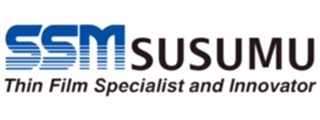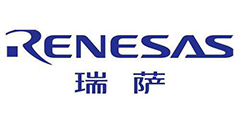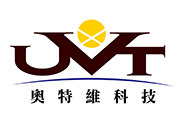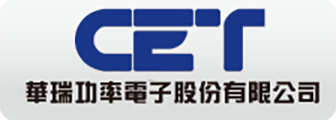Q'com Snags 5G OEMs, Carriers
SAN JOSE, Calif. — Qualcomm announced that 19 OEMs plan to use its Snapdragon X50 5G cellular modem and 18 carriers will conduct 5G field trials with it. The news marks some of the first system commitments in a race to deliver commercial 5G devices and services by early next year.
The OEMs include five of the top 10 smartphone makers but not Apple or Huawei. Wall Street analysts speculate that Apple ispoised to shift entirely to Intel LTE modems in its next handsets, and Huawei’s HiSilicon division may design a 5G baseband on its own or in its partnership with Taiwan’s Mediatek. Samsung, the world’s largest smartphone maker, announced previously that it is working with Qualcomm on 5G.
Qualcomm listed as users of its 5G baseband top smartphone vendors Oppo and Xiaomi, ranked fourth and fifth, as well as LG and ZTE, also in the top 10, according to Strategy Analytics. Among its other 5G customers are Asus, Fujitsu, HMD Global, HTC, Sharp, and Sony.
Eight of the 5G customers that Qualcomm announced make a range of much lower-volume data devices such as modules, routers, gateways, and tablets for home or industrial use. They include companies such as NetComm Wireless, Netgear, Sierra Wireless, Telit, Wingtech, and WNC.
Qualcomm said that 18 carriers have committed to use the X50 chip in sub-6-GHz and millimeter-wave field trials and plan to roll out commercial 5G services next year. They will not be Qualcomm customers, but they typically have chipset certification programs that are checkboxes for OEMs getting products to work on their networks.
The carriers include AT&T, British Telecom, China Telecom, China Mobile, China Unicom, Deutsche Telekom, KDDI, KT Corporation, LG Uplus, NTT Docomo, Orange, Singtel, SK Telecom, Sprint, Telstra, TIM, Verizon, and Vodafone Group.
In the press materials, AT&T said that it plans commercial 5G services starting in 2018, probably for residential fixed wireless access. China Telecom said that it launched pilot 5G programs in six cities last year.
With the exception of Huawei, the announcement shows that Qualcomm has snagged all of the major carriers and handset OEMs in China. The company concluded in 2015 tough negotiations over royalties with the China government and later with many individual OEMs. It now claims that it is weeks away from getting China regulators to approve its bid to buy NXP, the deal’s last hurdle.
Some analysts see the NXP acqusition as key to whether or not Qualcomm will avoid being acquired by Broadcom. Qualcomm’s prowess in 5G cellular is a big part of its argument to shareholders to vote against the acquisition in a proxy battle.
Qualcomm hit download data rates for the Snapdragon X50 as high as 4.5 Gbits/second in lab demos. It will show the chip running at the Mobile World Congress later this month.
The X50 is essentially two major components. A baseband chip is packaged with intermediate frequency circuits. A transceiver module packs an RF front-end module with an envelope tracker, power amplifiers, and integrated antennas. Handsets may use two or three antenna modules for optimal reception, reducing the effects of hands blocking signals.
All of the elements are packaged in a single board that “looks like a chip and a module but it’s really a couple of chips and an RF front-end module with antennas,” said Peter Carson, a senior product management director at Qualcomm.
The company is still optimizing multiple components, so the exact size increase of the X50 over today’s LTE modems has not been determined. For instance, a millimeter-wave module is now about the size of a dime, but Qualcomm expects to shrink it at least 50% for a commercial product.
In addition, the company is fine-tuning the size of the power amplifiers that the X50 needs. It also is still working out plans for a possible integrated applications processor for the device.
In terms of power consumption, Qualcomm expects that the sub-6-GHz versions will have “comparable energy-per-bit” as its latest LTE modem, he said.
在线留言询价
- 一周热料
- 紧缺物料秒杀
| 型号 | 品牌 | 询价 |
|---|---|---|
| CDZVT2R20B | ROHM Semiconductor | |
| MC33074DR2G | onsemi | |
| BD71847AMWV-E2 | ROHM Semiconductor | |
| TL431ACLPR | Texas Instruments | |
| RB751G-40T2R | ROHM Semiconductor |
| 型号 | 品牌 | 抢购 |
|---|---|---|
| BP3621 | ROHM Semiconductor | |
| ESR03EZPJ151 | ROHM Semiconductor | |
| BU33JA2MNVX-CTL | ROHM Semiconductor | |
| IPZ40N04S5L4R8ATMA1 | Infineon Technologies | |
| TPS63050YFFR | Texas Instruments | |
| STM32F429IGT6 | STMicroelectronics |
- 周排行榜
- 月排行榜
AMEYA360公众号二维码
识别二维码,即可关注


请输入下方图片中的验证码:























